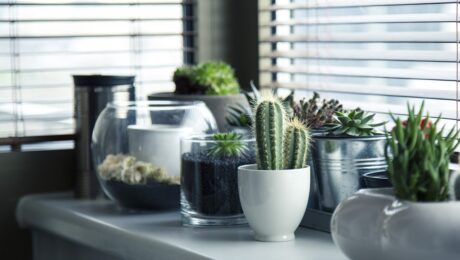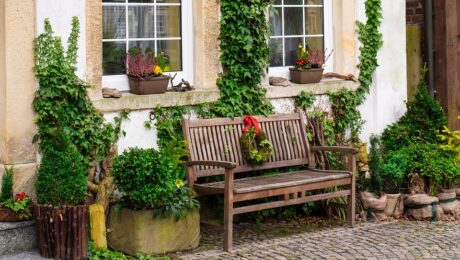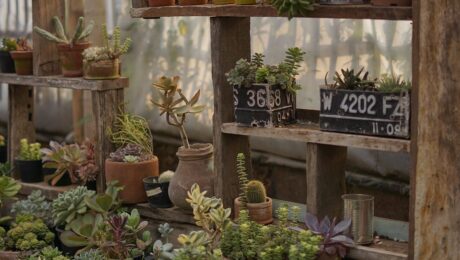The Ultimate Guide to Companion Planting for a Healthier Garden
Are you looking to improve the health and productivity of your garden? Companion planting is a gardening technique that involves planting different crops together to help them thrive. By choosing the right companion plants, you can increase yields, deter pests, and improve soil health. In this ultimate guide to companion planting, we will explore the benefits of this practice and provide tips on how to get started in your own garden.
One of the key benefits of companion planting is pest management. By strategically planting certain crops together, you can naturally repel pests and reduce the need for chemical pesticides. For example, planting marigolds alongside tomatoes can help deter nematodes, while growing basil near tomatoes can ward off aphids. By incorporating pest-repelling companion plants into your garden layout, you can create a more balanced ecosystem that supports healthy plant growth.
In addition to pest management, companion planting can also improve soil health. Certain plants have deep root systems that help break up compacted soil and improve drainage. For example, planting nitrogen-fixing legumes like peas or beans alongside heavy feeders like corn or squash can help replenish nutrients in the soil. By choosing complementary plant pairings, you can create a more sustainable and fertile growing environment for your crops.
Another benefit of companion planting is increased yields. Some plants have natural synergies that enhance each other’s growth and productivity. For example, interplanting leafy greens with root vegetables can maximize space and light availability in your garden bed. Additionally, planting aromatic herbs like dill or cilantro near brassicas like cabbage or broccoli can improve flavor and overall plant health. By experimenting with different plant combinations, you can discover which pairings work best for your specific growing conditions.
When planning your companion planting layout, it’s important to consider factors such as plant height, spacing requirements, and sunlight preferences. Tall plants should be positioned to provide shade for shorter crops without obstructing their access to sunlight. Be mindful of each plant’s growth habits and space requirements to ensure they have room to thrive without competing for resources. By designing a well-thought-out companion planting scheme, you can create a harmonious garden ecosystem that promotes biodiversity and resilience.
Companion planting is a valuable tool for any gardener looking to improve the health and productivity of their crops. By strategically pairing compatible plants together, you can enhance pest management, soil health, and overall yields in your garden. Experiment with different plant combinations to find what works best for your specific growing conditions and enjoy the benefits of a healthier and more abundant harvest. Start incorporating companion planting into your gardening practices today and watch as your garden flourishes like never before!
- Published in Uncategorized
Top 5 Mistakes New Gardeners Make and How to Avoid Them
Gardening is a rewarding hobby that allows you to connect with nature, grow your own food, and beautify your outdoor space. However, for new gardeners, it can also be overwhelming and intimidating. There are common mistakes that many beginners make when starting their gardening journey. In this blog post, we will discuss the top 5 mistakes new gardeners make and provide tips on how to avoid them.
The first mistake that new gardeners often make is not researching their plants properly. It’s important to understand the specific needs of each plant you choose to grow, such as light requirements, soil type, watering frequency, and temperature preferences. Before purchasing any plants, take the time to research them online or consult with a local nursery for advice. By understanding your plants’ needs, you will be better equipped to care for them properly and ensure they thrive in your garden.
Another common mistake new gardeners make is overwatering their plants. While it’s natural to want to keep your plants hydrated, too much water can actually harm them. Overwatering can lead to root rot, mold growth, and nutrient deficiencies in your plants. To avoid this mistake, check the moisture level of your soil before watering by sticking your finger into the soil about an inch deep. If it feels dry, then it’s time to water. Additionally, make sure your pots have proper drainage holes to prevent water from pooling at the bottom.
One of the most important aspects of gardening is soil preparation, yet many new gardeners neglect this step. Poor soil quality can hinder plant growth and development, so it’s crucial to amend your soil with organic matter such as compost or manure before planting. This will help improve drainage, fertility, and overall plant health. Take the time to test your soil pH as well to ensure it’s suitable for the types of plants you want to grow. Investing in good quality soil will set a strong foundation for a successful garden.
New gardeners often underestimate the importance of regular maintenance in their gardens. Weeding, pruning, fertilizing, and monitoring for pests are all essential tasks that should not be neglected. Weeds compete with your plants for nutrients and sunlight while pests can wreak havoc on your crops if left unchecked. Set aside time each week for garden maintenance tasks so that you can stay on top of any issues before they become major problems.
Lastly, one common mistake new gardeners make is not being patient enough with their plants’ growth progress. Gardening requires patience as some plants may take weeks or even months before producing flowers or fruits. It’s important not to get discouraged if you don’t see immediate results but instead trust the process and continue caring for your plants diligently. Remember that gardening is a learning experience and every mistake is an opportunity to improve.
Starting a garden as a beginner can be both exciting and challenging but by avoiding these top 5 mistakes new gardeners often make – lack of research on plant needs; overwatering; neglecting soil preparation; skipping regular maintenance; impatience – you’ll be well on your way to creating a thriving and beautiful garden space that brings joy and satisfaction year after year.
- Published in Uncategorized
Urban Gardening: Transform Your Small Space into a Green Oasis
Are you feeling the urge to connect with nature but don’t have a large backyard or garden space? Urban gardening might be the perfect solution for you! With a little creativity and some careful planning, you can transform your small space into a lush green oasis right in the heart of the city. In this blog post, we will explore the benefits of urban gardening and provide you with tips and tricks to help you create your own urban garden paradise.
Urban gardening is not only a great way to beautify your surroundings, but it also has numerous health benefits. Growing your own fruits, vegetables, and herbs allows you to have access to fresh, organic produce right at your fingertips. Plus, gardening is a great form of exercise that can help reduce stress and improve mental well-being. Even if you only have a small balcony or windowsill, there are plenty of options for growing plants in containers or vertical gardens. Get creative with hanging planters, trellises, and stackable pots to maximize your space.
One of the keys to successful urban gardening is choosing the right plants for your specific environment. Consider factors such as sunlight exposure, temperature fluctuations, and available space when selecting plants for your garden. Herbs like basil, mint, and parsley thrive in sunny spots and can easily be grown in pots on a windowsill. Leafy greens such as lettuce and spinach are also well-suited for container gardening and can be harvested continuously throughout the growing season. For those with limited space, compact varieties of tomatoes, peppers, and strawberries work well in small containers or hanging baskets.
Don’t forget about incorporating flowers into your urban garden as well! Not only do flowers add beauty and color to your space, but they also attract pollinators like bees and butterflies that are essential for fruit production in many plants. Choose pollinator-friendly flowers such as lavender, sunflowers, zinnias, and cosmos to create a vibrant ecosystem in your urban garden. You can also plant edible flowers like nasturtiums or pansies that can be used to garnish salads or desserts.
In addition to choosing the right plants for your urban garden, it’s important to provide them with proper care and maintenance. Regular watering is essential for container plants since they tend to dry out more quickly than traditional garden beds. Be sure to check the moisture levels of the soil regularly and adjust your watering schedule accordingly. Fertilizing plants with a balanced organic fertilizer will help promote healthy growth and abundant yields throughout the growing season.
Urban gardening offers city dwellers an opportunity to reconnect with nature and create their own green oasis in even the smallest of spaces. By choosing the right plants, providing proper care and maintenance, and getting creative with containers and vertical gardens, you can transform your balcony or windowsill into a thriving garden paradise. So roll up your sleeves, grab some potting soil and seeds, and start cultivating your own urban garden today! With a little time and effort, you’ll soon be enjoying fresh produce straight from your own backyard (or should I say back balcony)!
- Published in Uncategorized
Year-Round Gardening: How to Keep Your Garden Thriving in Every Season
Gardening is a wonderful way to connect with nature, reduce stress, and enjoy the beauty of your outdoor space. While many people think of gardening as a spring and summer activity, the truth is that you can keep your garden thriving all year round with a little bit of planning and effort. In this blog post, we will explore some tips and tricks for maintaining a beautiful garden in every season.
Choose the right plants: One of the most important factors in maintaining a year-round garden is choosing the right plants. Look for varieties that are well-suited to your climate and soil conditions, and that will thrive in different seasons. Some plants, such as evergreens and winter-blooming flowers, are perfect for adding color and interest to your garden during the colder months. Be sure to research each plant’s specific needs so you can provide them with the care they require.
Plan for seasonal changes: As the seasons change, so do the needs of your garden. In the spring and summer, focus on planting annuals and vegetables that thrive in warmer weather. As fall approaches, start transitioning to cool-season crops like lettuce, kale, and broccoli. In the winter, consider planting cover crops or cold-hardy vegetables like carrots or Brussels sprouts. By planning ahead for these seasonal changes, you can ensure that your garden continues to flourish year-round.
Implement proper maintenance: To keep your garden looking its best in every season, it’s important to stay on top of regular maintenance tasks. This includes watering plants according to their specific needs, pruning trees and shrubs as needed, fertilizing at appropriate times, and keeping an eye out for pests or diseases. Regular weeding is also crucial to prevent unwanted plants from taking over your garden beds.
Consider adding structures or features: To make your garden more resilient throughout the year, consider adding structures or features that can help protect plants from harsh weather conditions. This could include installing a greenhouse or cold frame for growing tender plants in colder months, building raised beds for better drainage and soil quality control, or adding trellises or arbors for climbing plants to flourish.
Embrace diversity: A diverse garden is a healthy garden! By incorporating a variety of plant species with different blooming times, growth habits, and functions (such as attracting pollinators or deterring pests), you can create a more resilient ecosystem that thrives in every season. Consider planting native species that are adapted to your region’s climate and soil conditions for added sustainability.
With some careful planning and thoughtful maintenance practices, you can enjoy a thriving garden all year round. By choosing the right plants for each season, planning ahead for seasonal changes, implementing proper maintenance routines, considering additional structures or features as needed, and embracing diversity in your plant selections, you can create a beautiful outdoor space that brings joy throughout every season. So roll up your sleeves and get ready to watch your garden flourish no matter what time of year it may be
- Published in Uncategorized





